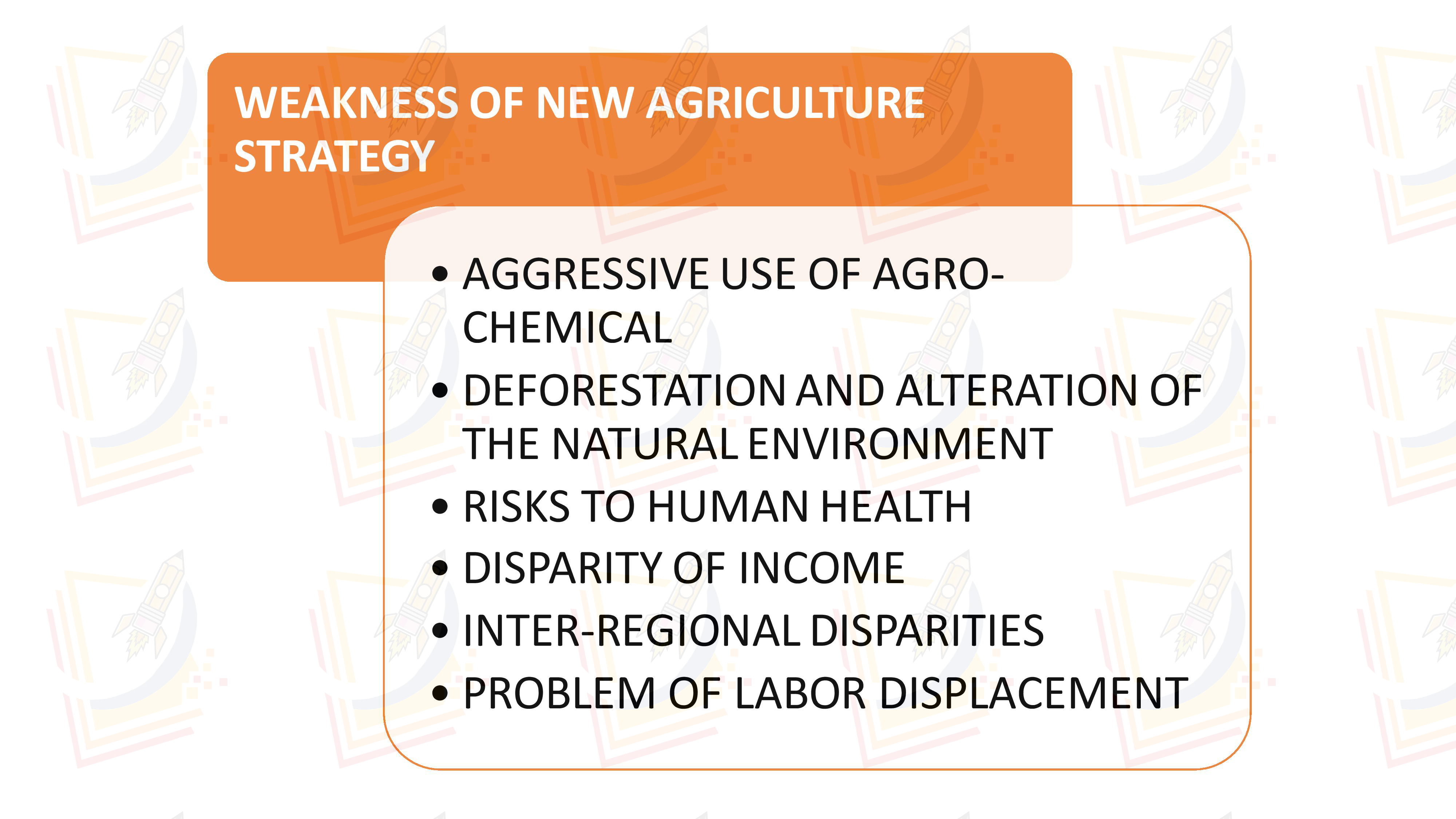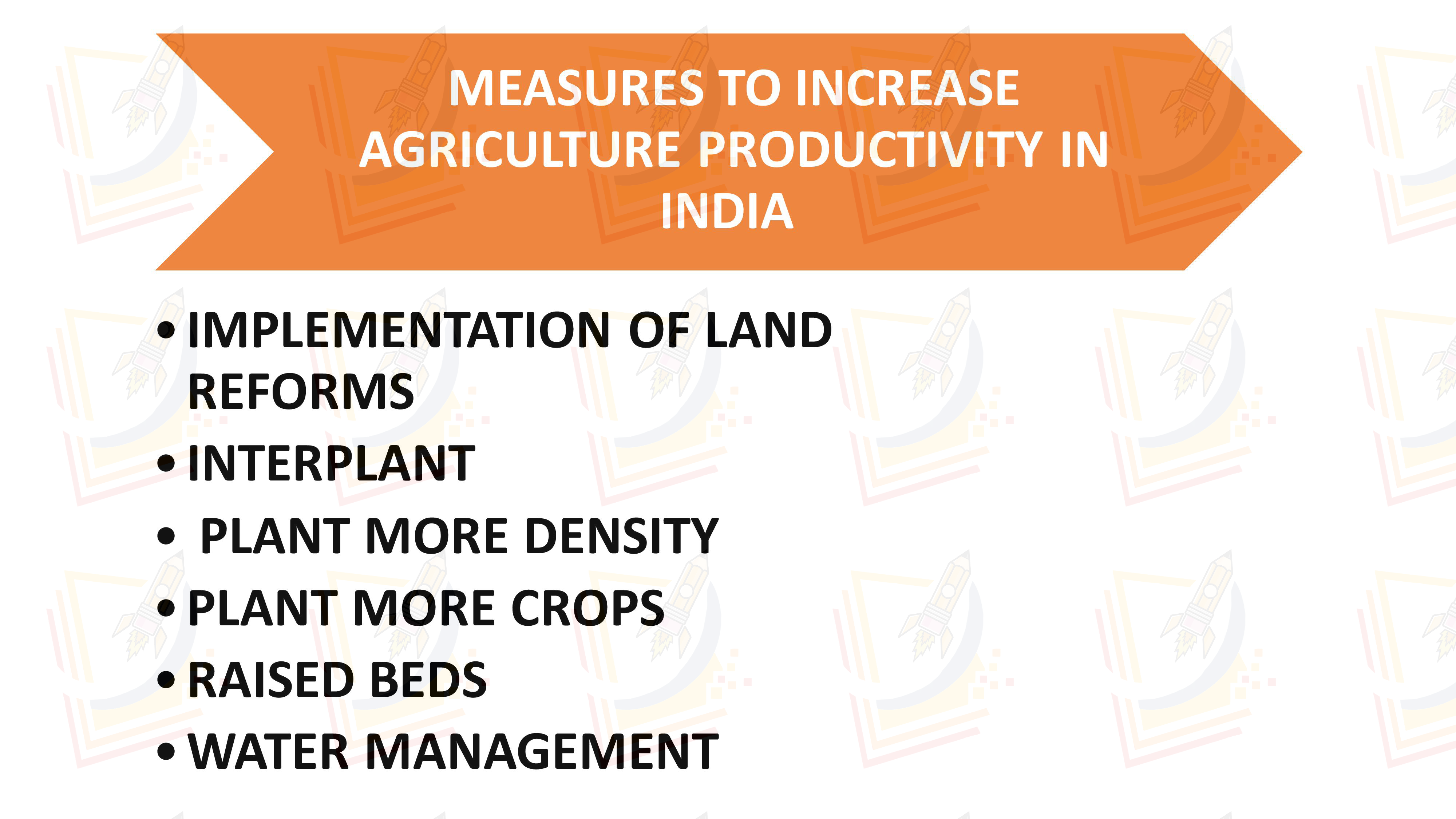IMPACT ON ENVIRONMENT
- The green revolution package has led to serious environment disruption.
- Excessive concentration of fertilizers and pesticides contaminate the stream and water table with serious hazards for the population.
- The new agricultural technology along with changed price policy environment has altered
- The change was also in traditional crop patterns and systems.
- FOR EXAMPLE :- Pulses
WEAKNESS OF NEW AGRICULTURE STRATEGY

- AGGRESSIVE USE OF AGRO-CHEMICAL :- Intensive farming as earlier stated involves the utilization of numerous types of agro-chemicals including chemical pesticides, fertilizers, herbicides, insecticides, and acaracides. When these chemicals are used they not only destroy their intended targets such as pests, weeds and parasites but also contaminate the food products.
- DEFORESTATION AND ALTERATION OF THE NATURAL ENVIRONMENT :- natural habitats and wild animals have been heavily affected as the destructive practices have persistently contributed to habitat loss. The use of chemical fertilizers and herbicides contaminates water soils, water pollution, and water bodies like oceans, rivers and lakes. Fertilizer nutrients in particular are the main cause of damage in most of the world’s water bodies such as oceans, lakes, and rivers.
- RISKS TO HUMAN HEALTH :- The agriculture strategy have damage to the human health. Many fertilizers chemicals are used to grow the variety of crops these harmful chemical can harm the human health.
- DISPARITY OF INCOME : - Green revolution has widened the disparity in income among the rural population.
- INTER-REGIONAL DISPARITIES : - Green revolution widened the inter-regional disparities in farm production and income.
- PROBLEM OF LABOR DISPLACEMENT:- New agricultural strategy along-with increased mechanization of agriculture has created a problem of labor displacement.
MEASURES TO INCREASE AGRICULTURE PRODUCTIVITY IN INDIA

- IMPLEMENTATION OF LAND REFORMS :- For improving the production, land reforms are the first and point. Machines, tractors, and implements do land reforms. These machines have the qualities that make rugged farming areas smooth to work on the field efficiently. Working on the field is easy, that means an improvement in productivity is easy. Land reforms are the best method to increase production.
- INTERPLANT : - Interplanting is a practice in which different crops are growing together at the same time. It is the best way to maximize the productivity of your growing space. Some crops are the best together, some not.
- PLANT MORE DENSITY :- It is the simplest way to improve the productivity of farms, in this plant crops close together. Many farmers keep their vegetables excessively away, which leads to the abandonment of large areas growing well.
- PLANT MORE CROPS :- The next method of productivity is to plant more than more crops.
- RAISED BEDS :- Traditional farming systems place crops in separate rows by tractor paths, with permanent beds planting multiple rows of crops within beds of the same width. It creates dense plantations, fewer pathways, and more active growing areas. Raised beds are symbolic of improving the productivity of crops.
- WATER MANAGEMENT :- water is essential need for planting the crops. Water management is the best way to improve the production. By manufacturing cannels, tubes etc.
CONCLUSION
The new agriculture strategy has the great impact on the Indian agriculture. The new methodology has been used to improve the agriculture of the economy but harmful chemical must be less in used.
